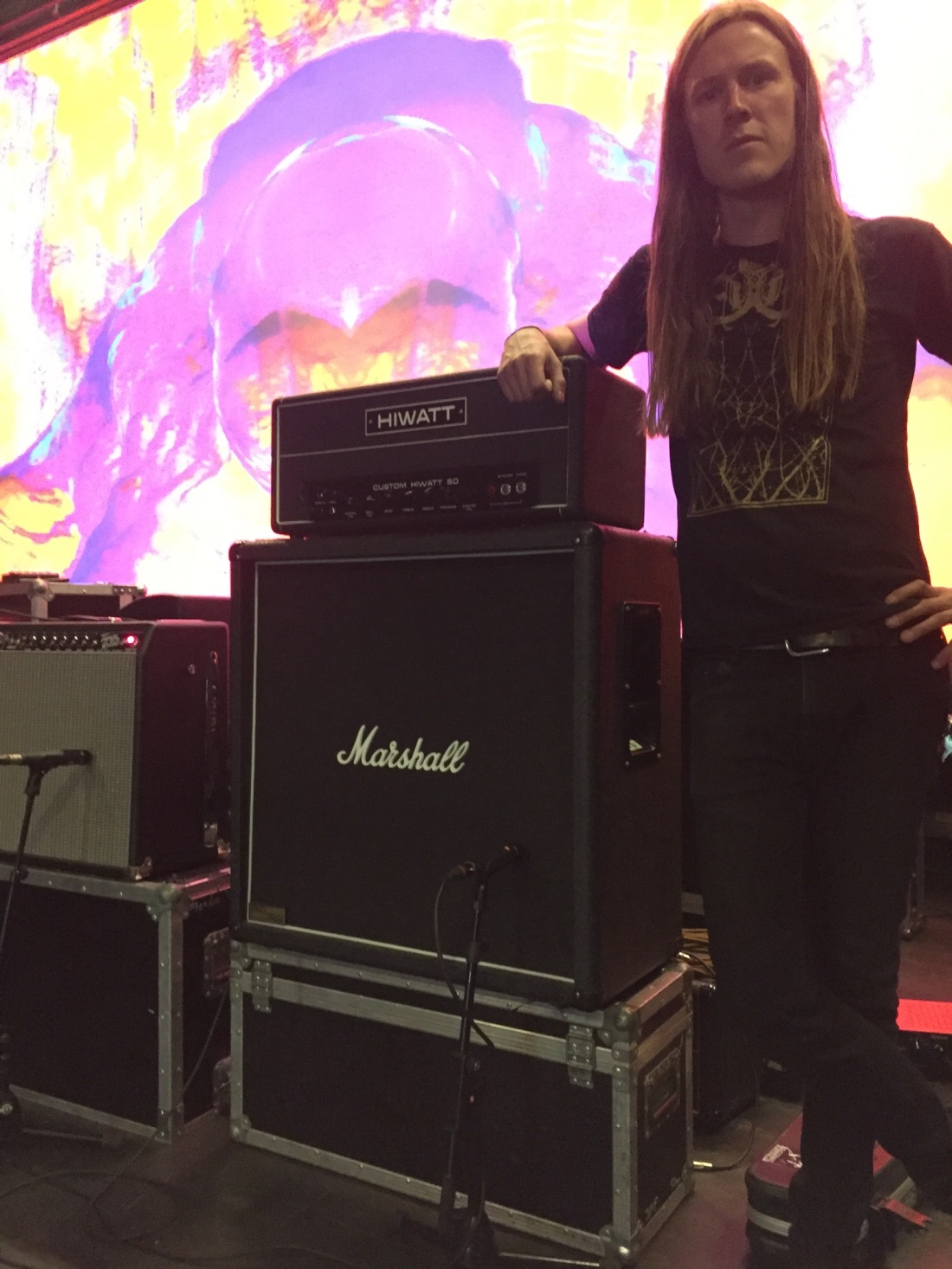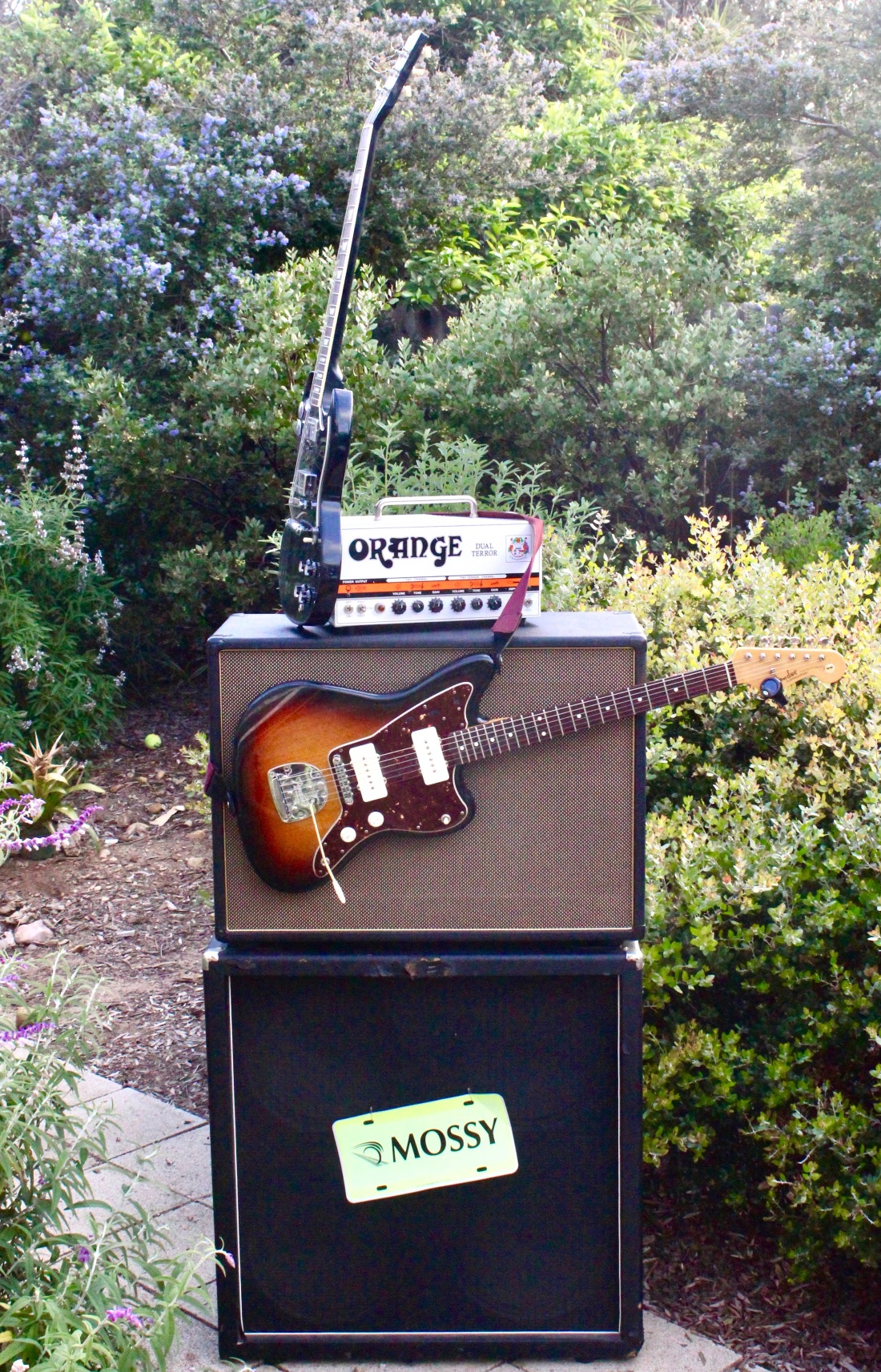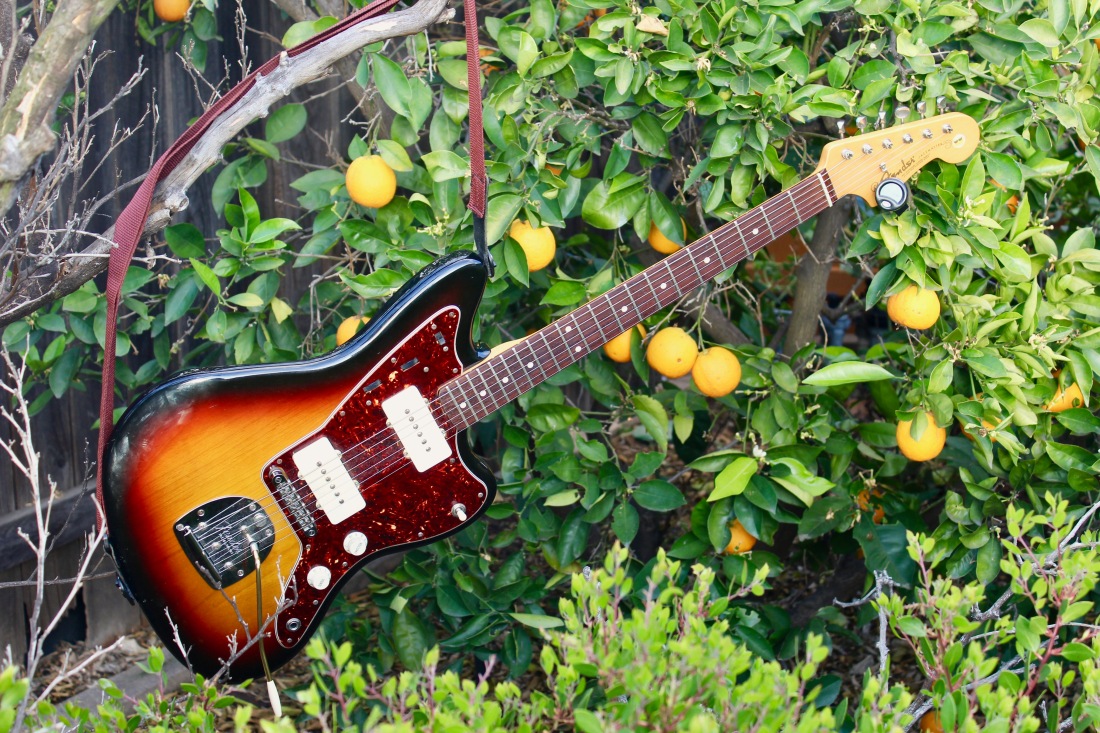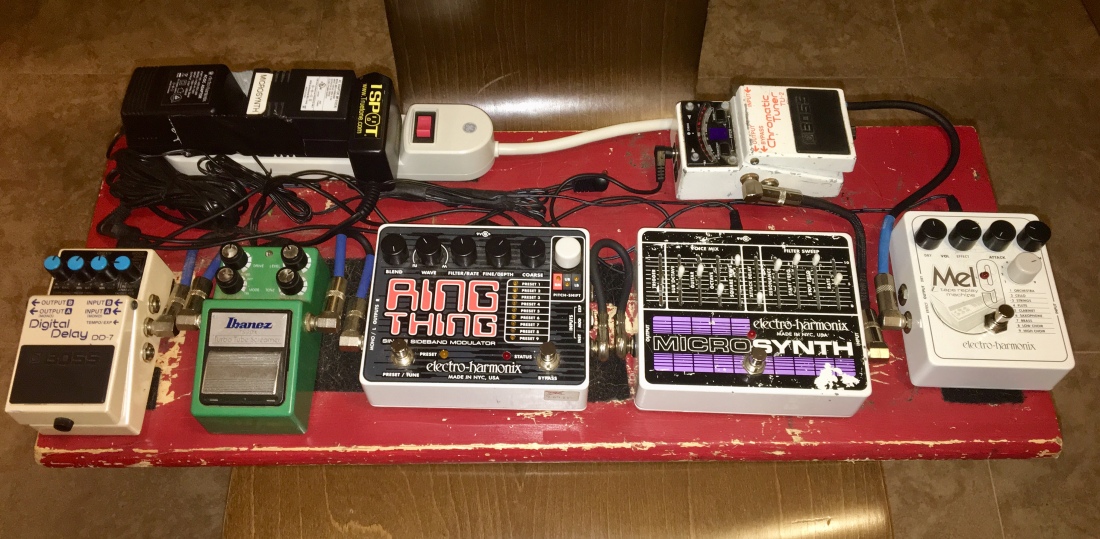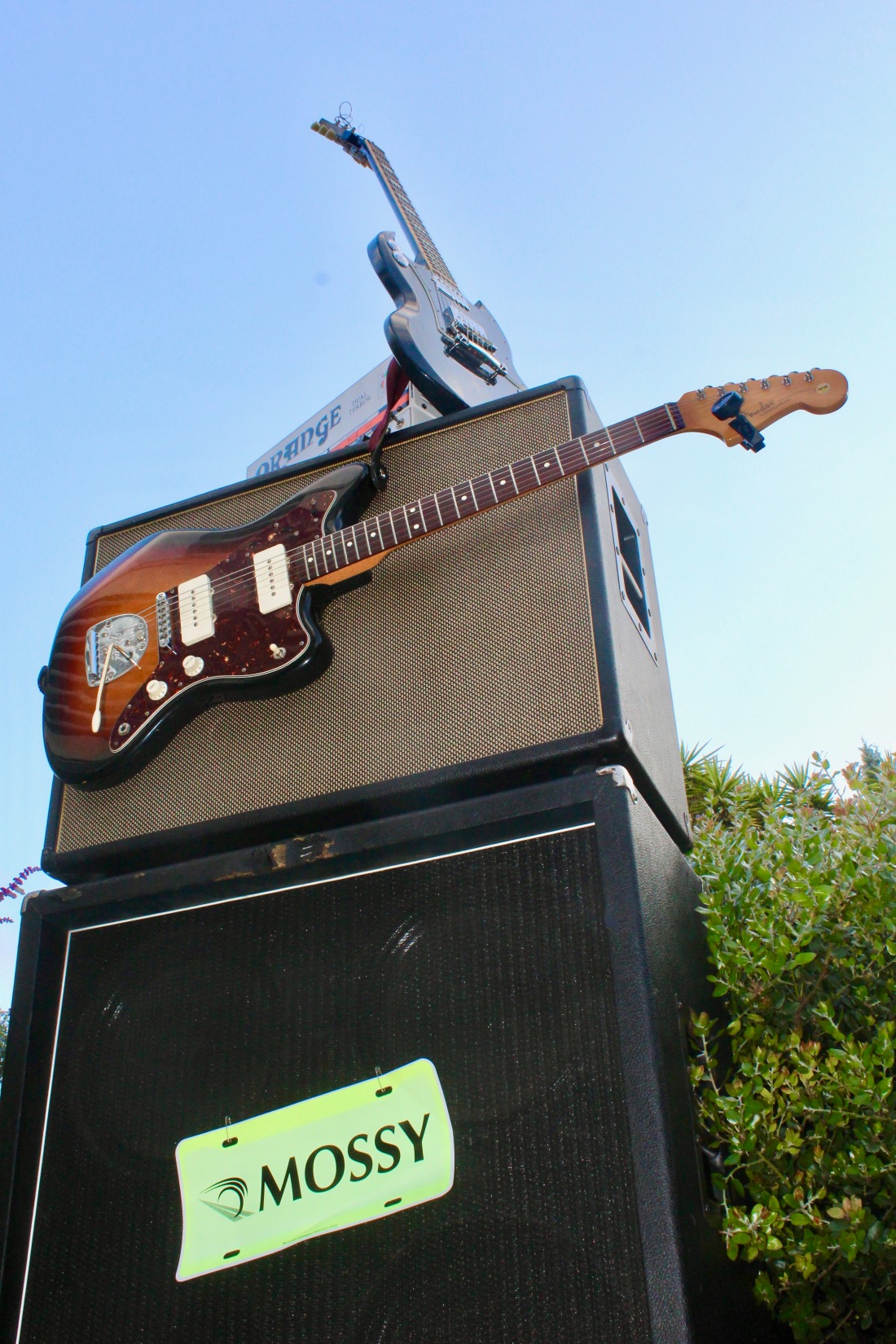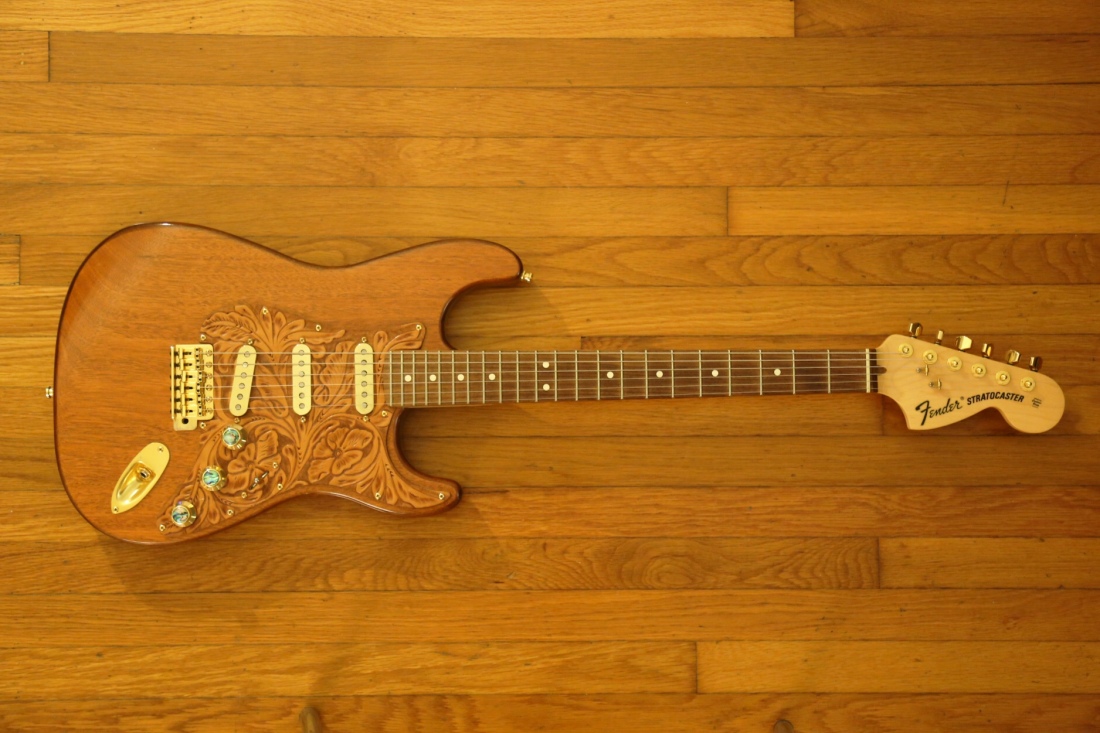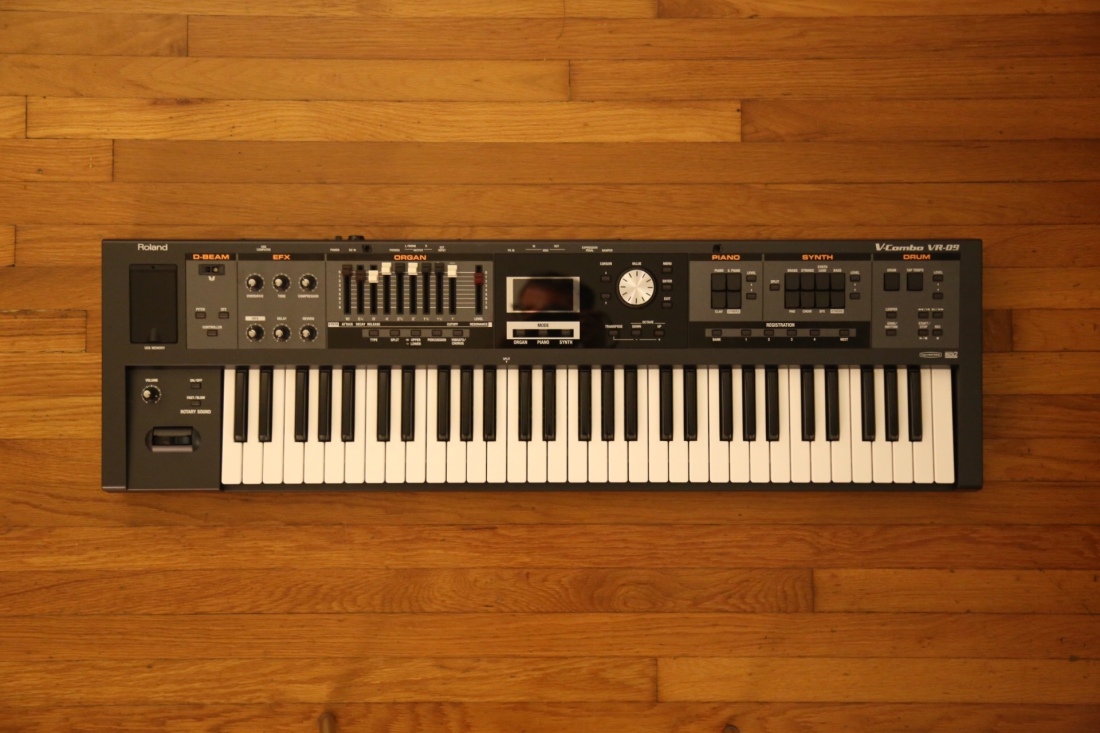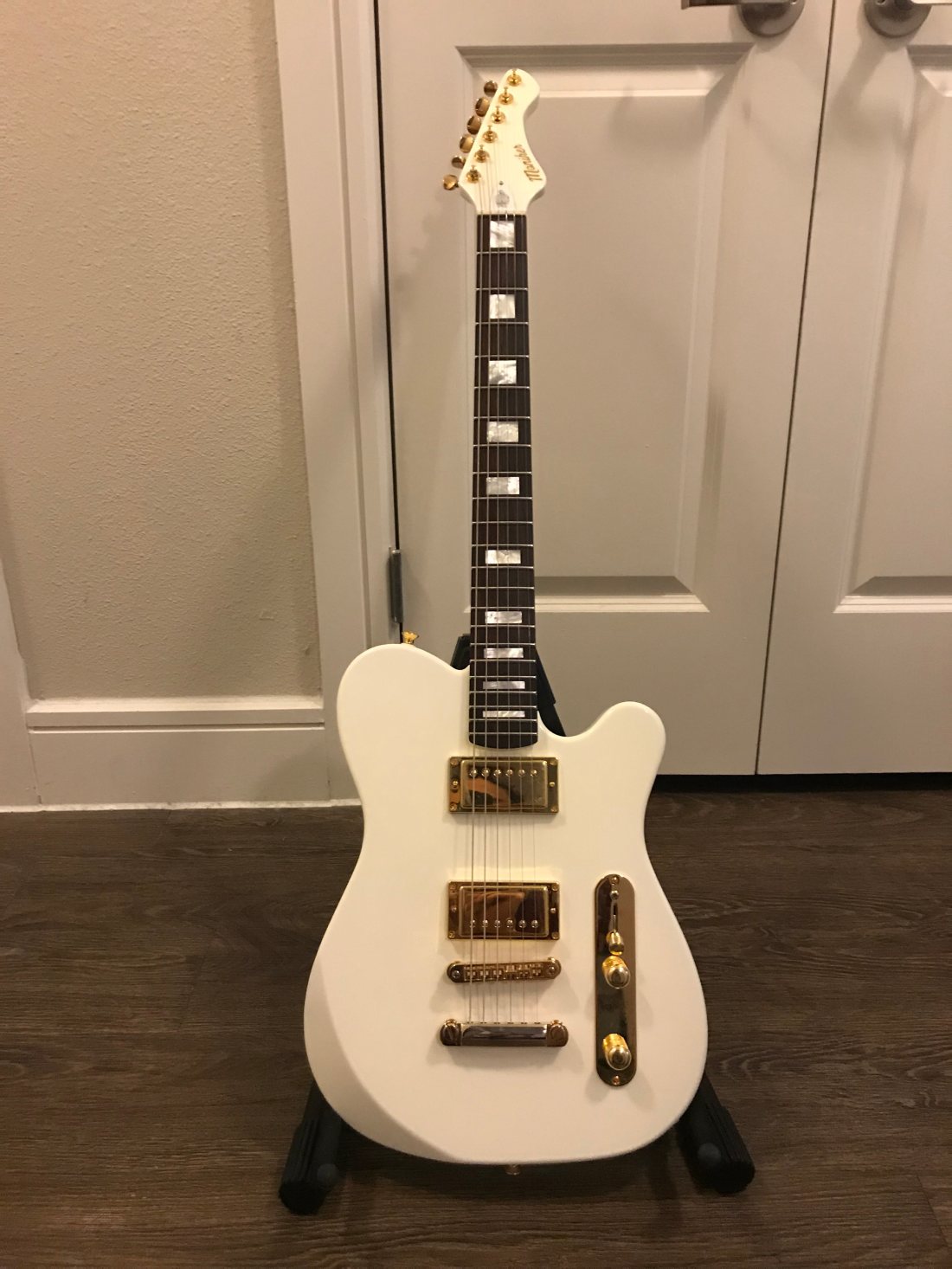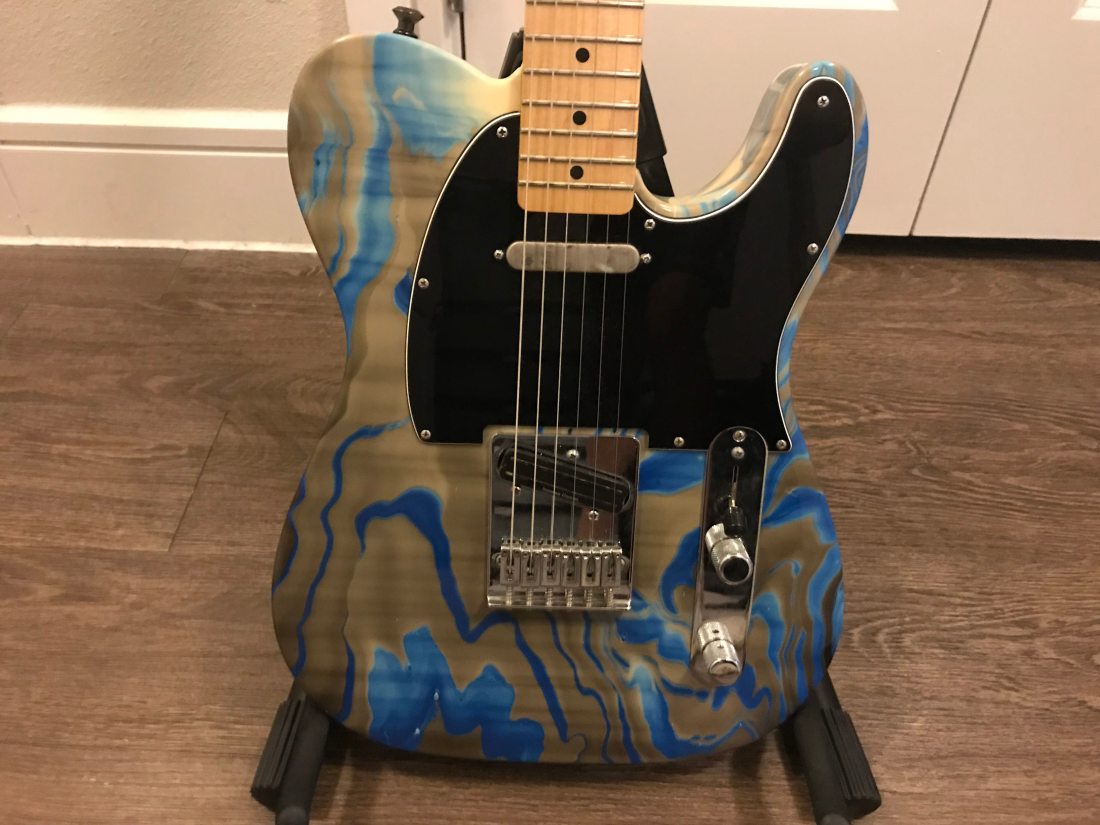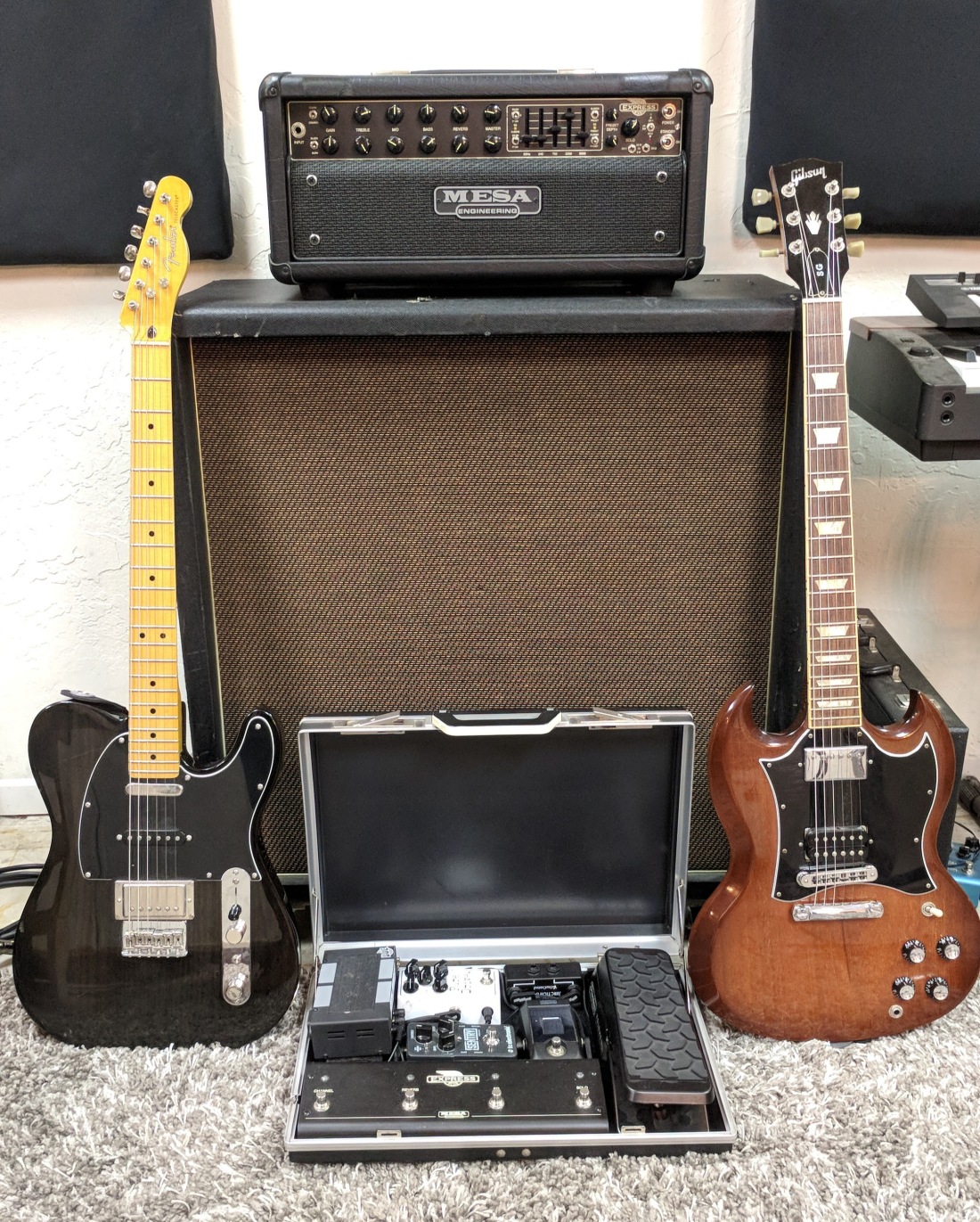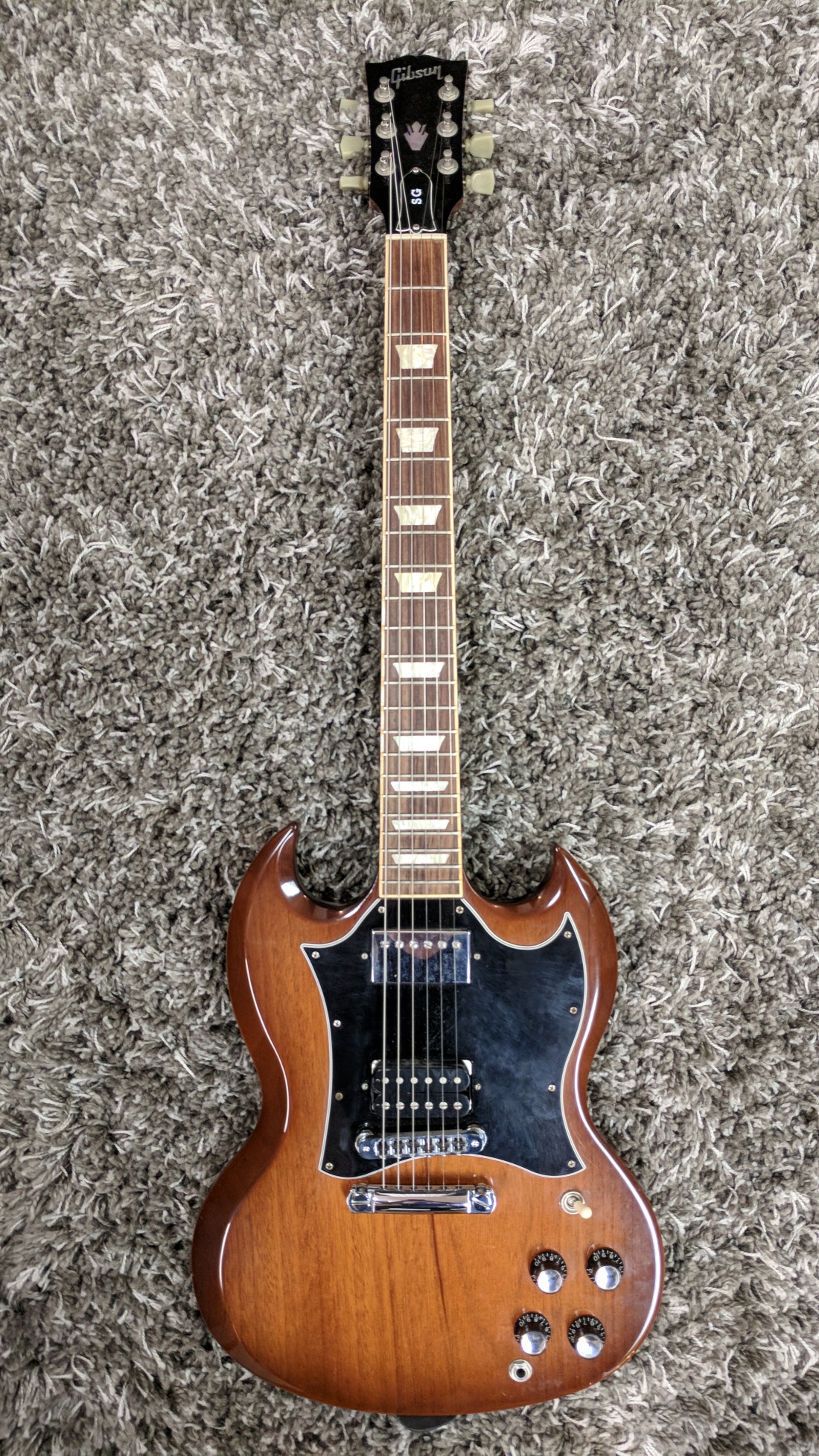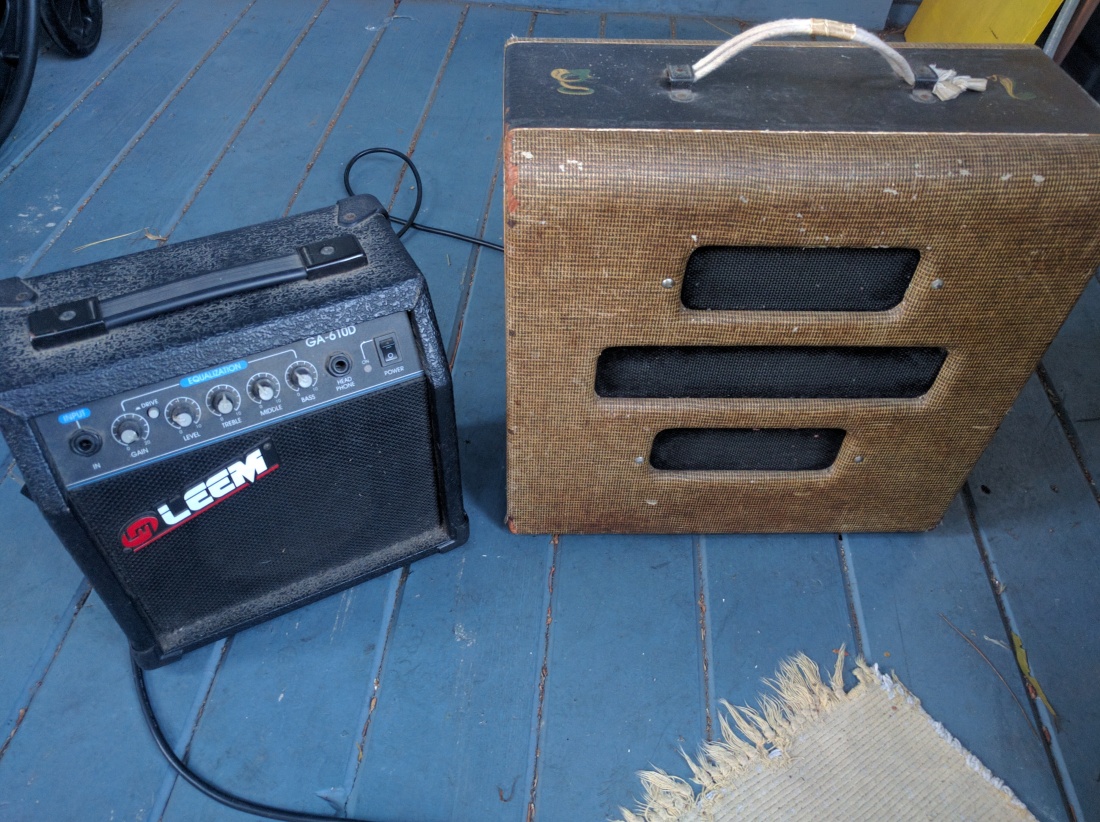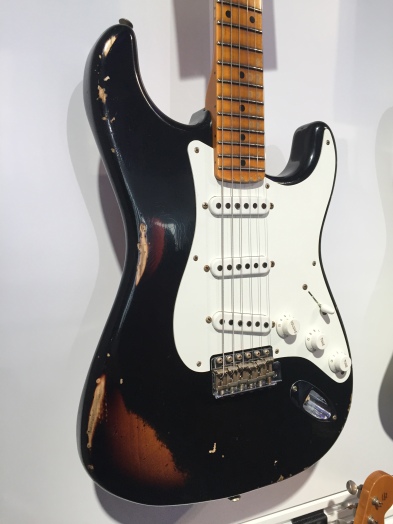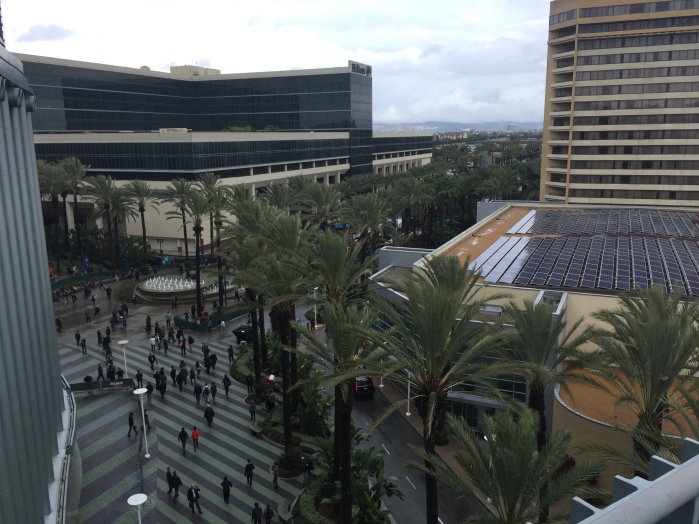
EndCastle: Facebook / Instagram / Bandcamp / Spotify
1. Take me through that luscious rig of yours.
Guitar: 2014 Gibson Firebird
Pedals: Dunlop 535q Multi-Wah > EarthQuaker Devices BitCommander > ToneBone Hot British > ZVEX Box of Rock > Boss RV5 Reverb > Boss DD7 > TC Electronic Flashback > TSVG Emperor > Mad Professor Ruby Red Booster > TC Electronic Spark Boost > TC Electronic Poly Tune
Amp: Music Man RD100
Cabinet: Hand built by my buddy, Frank Andrews. It has 2 12″ Warehouse speakers.
I have a lot of distortion options on my set up and they all sound different. I usually use two of them at the same time. I can go from Skynyrd-style distortion to Dimebag Darrell distortion really quick. I recently picked up the BitCommander, which makes some incredible sounds. It sounds like a synth at times. I haven’t found a use in any of our songs for it but I cant wait to use it in one. For now I just use it for sound effects. I love my TC Electronic Poly Tuner. A lot of people don’t like the idea of it or are scared of it or say it doesn’t work but I have had lots of success. My old boss TU2 I couldn’t see during daytime shows at all, I think they fixed that on the TU3 though. My Poly Tuner pedal is so bright and clear its unbeatable, and once you get used to it, you just strum all the strings at once and it tells you if one is sharp or flat, it makes quick work of tuning in between songs or even during.

2. Diggin’ the assortment of pedals on the board: I noticed you have two delays on your board — what is each for and why did you choose those two to use?
I use the Boss DD7 for just basic delay use. It has a built-in tap tempo that I’ll use. It is a powerhouse delay that I under-utilize however, only because it is a pain to get down on the floor and mess with the dials during a show. I like to just set it and forget it.
The Flashback delay is also a powerhouse – I wish I had bought the big boy one – the Flashback X4, which has presets and whatever else you need. I use the Flashback for modulated delays. It has a mode for Reverse which does exactly what it says, believe it or not. I go back and forth between the Reverse and the Lo-fi mode. The Lo-fi also does what the name says, it roughens up the sound of the delays and sounds like an old low-fi Beck cassette.
More often than not, I have both the DD7 and the Flashback going at the same time. It works great when clean or distorted. Most of the times I’ll use it clean with the DD7 on and the Flashback delay set on reverse and the notes ring out with a ghostly delay that creeps up back on the note again.
3. Same question with the boosters: Why use both a Ruby Red and a Spark?
The Spark has been on my set up for a few years now and will never leave. It’s a great little boost that I can use for solos to bring my level up a bit. A nice feature with the Spark is that you can either click it on and click it off like a normal pedal, or if you hold your foot down on the switch – it activates – and when you take your foot off, it will turn off right away, so it helps prevent my treestump feet from tripping up on stage, which still happens often.
The Ruby Red is kind of on loan to me from Jesse [Kling, guitarist in Dead Feather Moon]. I use it as a treble boost. I don’t run any EQ pedals and so my Firebird can at times sound more like a Crow when I don’t have any pedals going — so this adds a nice treble boost. It’s a night-and-day difference really and since I received it, I have had it turned on pretty much non stop. I used it in the studio on two tracks recently, and it is the only pedal in use I think for one of the songs.

4. I remember talking with you about your guitars one time and you mentioned the Firebird was like the worst guitar ever built. But you’ve got it in your rig — why is that?
I have a weird relationship with the Firebird — anyone who has played in a band with me knows it. They are great guitars, but mine was a lemon, and Gibson was no help. Around the time I purchased my guitar, I noticed that a few of my guitar heroes were quietly switching from Gibson. Zakk Wylde, for example, who is known for his massive Gibson collection and signature Gibson guitars, all of a sudden cut ties with them and launched his own brand. Now as we all know, Gibson is dealing with bankruptcy issues. I feel like it is because their quality has gone way down.
I wanted a Firebird ever since seeing the Def Leppard “Hysteria” album tour videos as a kid; 15 years later I finally got one. I should have backed away from the deal when the ‘Big Guitar Store’ employee couldn’t figure out how to tune it, nearly twisting the wrong end of the tuner off, and wouldn’t take my advice of turning the tuning knobs on the back of the head stock. Shortly down the road, it would have tuning, electrical, and cosmetic issues. As soon as I’d fix a problem, another would pop up. I want to point out that the Steinberger Tuners they used for only about one year on the Firebird are both incredible and also the worst thing to go on a Gibson. If one breaks, which they do, you cant just buy one you have to buy the whole pack of 6. Steinberger went out of business and Gibson would not tell me what I was supposed to do with my broken tuner. I had to look on eBay dozens of times per day because apparently it was in high demand, but there weren’t many out there. If it did pop up it would be a pack of 6 for almost $500. I got super lucky one day, months later, and only had to pay $50.
I remember one night throwing my guitar against a tree at an outdoor party that my cover band played, it has honestly played better since that night. I’ll occasionally go back and forth between it and my Telecaster and my SG, but the Firebird fits on me much better and Ill never get rid of it.
5. Love the cabinet you’re playing through: Looks like one of those old Marshall 4×12” tall boys. Surely it must be a pain to haul that around — why not play a smaller combo and mic it live?
It looks massive, but really isn’t too bad. My buddy Frank, who I used to play with (he now plays in SD’s best Black Crowes tribute band The Black Crowes Revival) built it for me. It has two 12″ Warehouse speakers. Really nothing special inside there but it makes a good sound. The top speaker is angled up to my head so I can hear it at shows where we don’t have monitors. I have often thought about a smaller combo and I used to have smaller combos but I like that it is tall so it’s easy for me to turn knobs during the show or more importantly set my beer on top of it so I don’t have to bend down and pick it up.
I really do think there is a sound benefit – although during shows the mic might not pick that up. In practice, it sounds great. Jason from The Bad Vibes has a small Music Man combo that sounds huge however. Also having smaller amps on stage with me makes me feel like I’m in Spinal Tap during the Stonehenge scene — I’m always stepping on whatever is rolling around on stage, so that also explains the big tall cabinet.

6. I also had a Music Man head for a while and loved it. Where’d you find yours? What do you like about it? Have you had any problems with it, being vintage and all?
I found mine at Moze Guitars in La Mesa. I played Kyle Areford’s [from The Paragraphs, Dead Feather Moon] Music Man and knew I had to copy him and get my own. It took a long time to find but it popped up on the Moze Instagram and I drove down the next day and bought it. I like it so much because I am able to get a tight solid distortion out of it if I want, or I can switch to clean channel and have a warm clean sound with as much built-in reverb as I want. It sounds like a mix of Fender and Marshall to my ears. I think my amp was built in the early ‘80s. The only problem I have had is with the foot switch, but it’s aftermarket so it’s not the amps fault. It’s built like a tank. Kyle and I have had to take his apart to fix it and it took both of us to lift the guts up and put them back in the head.
7. Fun question: If a pedal manufacturer approached you and wanted to build a signature Eric James pedal — what brand would you want it to be, what features would it have, what would you name it, and why?
You’re right, that is a fun question. I don’t know if this would even sound good, but maybe EarthQuaker Devices will read this and be inspired: I want to be able to have a delay/tremolo thing where you can use an expression to slow the speed of it down or speed it up. I have the MiniMoog MF Tremolo that has the expression pedal so you can pretty much do what I described, and I’ve tried it with delays, but I just can’t come close to the sound I’m trying to make. So that would be cool, but realistically if the day ever came to make my own signature ERJ pedal, it would just be a big box with a bunch of lights on it, no effects or anything — just the little led lights all over it that turn on and off because I love lights.
8. What’s the worst piece of gear you’ve ever owned and why? Conversely, what’s the best?
The only thing that comes to mind is the Boss Metal Zone. I guess it has its use somewhere, and everyone likes their sounds but on my set up it sounded like garbage. I ended up selling it to a guy who collected them and had many Metal Zones for some reason.
I think my Music Man RD100 head is the best amp I’ve owned. Its built like a tank. It gets super loud but I am usually able to get a good sound at lower volume.
Not the best — but my favorite piece of gear is my Boss RV5 Digital Reverb. I bought it from Steve Stevens of Billy Idol. It makes some great hall reverb that doesn’t sound like anything an amp reverb could do. I use it often now in our songs.

9. Wait…you bought a pedal from Steve Stevens? WTF?
[haha] The story isn’t as fun [as you’d think]. Steve Stevens is one of my most influential musicians. Occasionally he sells his personal gear on his website (his Premier Guitar Rig Rundown video is incredible by the way). I was lucky enough to catch one of his sales and that’s how I got it. He autographed it to me and included a Steve Stevens playing card and some of his signature picks with his ray gun logo. I also hit him up one day asking a question about how he recorded one of his guitar tracks and he wrote right back — he’s a great guy!

10. That’s straight up awesome. Speaking of awesome — you’ve seen a ton of bands play in town and I know you’re always scoping out what everyone’s using: Who do you think has the most awesome gear?
I can’t remember the last time that I went to a show and didn’t come home wanting to buy new gear because of whoever played that night. There’s no shortage of great guitar setups and guitar players in San Diego or traveling through on tour.
Jesse, from Dead Feather Moon, has my favorite sound. Between his gear and his playing style, he definitely has a unique sound that really comes to life when he plays live. He’s a wizard when it comes to his gear. Also Daniel “Cuervo” Cervantes from Mrs. Henry and 10 other bands. I remember one night being blown away at one of their Belly Up shows at how great his sound was, and he explained it was just his cheap Acoustic amp. [Read Cervantes’ own Gear and Loathing feature here to find out more about his rig]

(Photo by Moses Namkung)
11. If money was no object, and you could buy any piece of equipment on the planet for one of your bandmates — what would you buy, who would you get it for, and why?
Dennis, our frontman/singer/guitar player extraordinaire, is one of the craziest, most expressive guitar players and songwriters I’ve ever met. I would get the guy who made Matt Bellamy’s crazy guitars [Hugh Manson, from Manson Guitar Works] with the built-in midi pad and what not, and have him make Dennis something even better. Also I’d have to get him a Theremin because he knows how to use those things.
12. What does EndCastle have coming up?
We’re stoked to be playing with Bosswitch and M. Crane at The Merrow on Thursday, July 26th. After that, we are playing on August 18th at Manhattan Bar and August 19th at Aztec Brewery. We are slowly recording songs at Emerald Age Recording, so we will have a few more songs up on our Spotify page soon. We’re working on new artwork and merch; I’d really like to make some EndCastle pogs.
